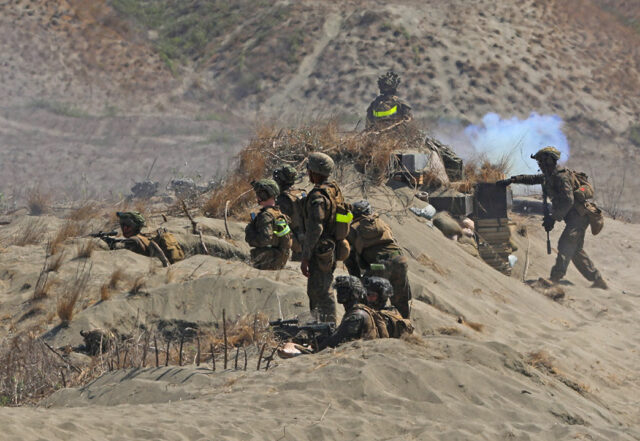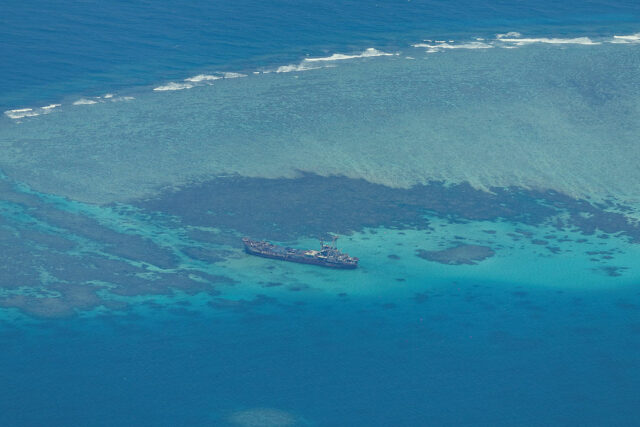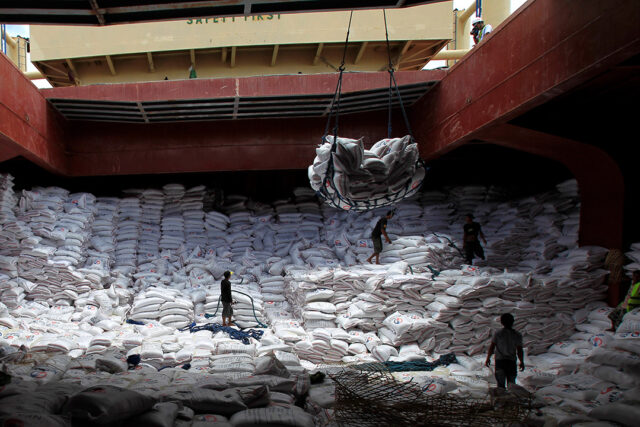The worrisome Wild West of testosterone hacking
NOWADAYS, men in their 40s like me are constantly being urged to get their testosterone levels checked, as private clinics and online providers tout “testosterone replacement therapy” (TRT) as the way to improve sexual, physical and mental well-being. It’s a concerning development in TRT’s two-decade journey from being a niche therapy to a lifestyle panacea.
While I’m all for restoring natural testosterone levels for those with a genuine deficiency, the boundaries of therapeutic use and physical enhancement are becoming fuzzy. There’s a danger that opting for TRT as a cure-all means health issues such as obesity aren’t appropriately addressed, while young men risk impaired fertility and a lifetime of unnecessary and costly injections.
This “Wild West” of medical overprescribing and self-medication of testosterone has been fueled by an image-conscious culture obsessed with self-optimizing, stymieing the aging process and averting a supposed crisis of masculinity, as well as by commercial medicine’s fondness for billable “wonder” cures to complex health problems.
Championed by buff podcasters, Hollywood actors, fitness influencers, and even former US presidential candidates, testosterone consumption is booming: In February, the trailing 12-month total of US dispensed prescriptions surpassed 10 million, according to data from healthcare research firm Iqvia Holdings, Inc.
TRT is a long-established, medically approved treatment for male hypogonadism — a relatively uncommon failure of endogenous testosterone production due to disorders of the testes, pituitary gland, or brain, commonly accompanied by low libido and erectile disfunction.
The idea of TRT is to restore normal hormone levels. But the benefits are potentially profound and go beyond improving sexual function. Testosterone increases bone density and hemoglobin, and thus can help with osteoporosis and anemia. Patients also tend to be evangelical about the impact on their mood, mental health, and overall quality of life.
“We have good evidence that TRT makes a big difference for men with a proper diagnosis of testosterone deficiency,” says Ben Davis, a London-based general practitioner specializing in sexual medicine and clinical sexology. “The big issue is around accurate diagnosis and thresholds for treatment — when do you say no to a patient wanting TRT? When do you say this isn’t testosterone deficiency?”
Over the past 20 years, private clinics have extended the TRT market by exploiting ambiguities about what counts as a deficiency and which symptoms warrant treatment. Increasingly, these firms are promoting TRT for non-specific conditions like fatigue, lack of motivation, inability to concentrate, and weight gain, which may have other causes. (Obesity and diabetes are associated with decreased testosterone, and this might explain indications that today’s men have lower T-levels than prior generations.)
Robert Stevens, medical director of a men’s health clinic in Dorset, England, told me men should be looking to not need TRT by addressing lifestyle factors such as stress, sleep, nutrition, and physical exercise. “The whole premise of TRT is to normalize physiology to allow you to put the work in,” he said. “But instead, you have cash-cow companies saying ‘Congrats! You Qualify for TRT!’”
This isn’t an exaggeration. In 2018, New York state’s attorney general took a chain of men’s health clinics to task for featuring a “Low-T” quiz on its website; checking off even a single symptom out of 11 options — such as “I often fall asleep after dinner” — was sufficient for patients to be informed they could be a candidate.
This has contributed to a casualness about injecting testosterone, which men now believe is “akin to taking a multivitamin,” the author and lifestyle guru Tim Ferriss wrote in February. But messing with your hormones isn’t something you should do lightly.
TRT is considered relatively safe — when administered appropriately. In 2015, the US Food & Drug Administration (FDA) ordered that testosterone product labels warn about potential increased risk of heart attacks and strokes. However, European regulators didn’t echo these concerns, and a trial commissioned at the FDA’s request involving more than 5,000 men ages 45-80 has since found no increased risk of major cardiovascular events or prostate cancer following treatment with a testosterone gel.
While that’s reassuring, there are other potential risks, such as polycythemia (increased red blood cell production), which must be carefully monitored because it can lead to blood clots.
Another issue is that administering exogenous testosterone suppresses a patient’s natural testosterone and sperm production, causing the testes to shrink. This can lead to fertility problems unless supplementary medicines are consumed. “We see this all the time, where guys who are doing this in their 20s decide they want to have kids in their 30s and they can’t,” the physician and longevity expert Peter Attia told a podcast in April.
TRT can also become a lifelong commitment, because stopping will cause the patient’s testosterone levels to revert to where they were before treatment. And this dependency is a potential money-spinner for private clinics. Costs vary by provider and level of support, but fees of around $100-$200 per month are typical among US online-only providers, who often don’t accept insurance.
Terms about low testosterone coined by men’s health clinics, such as “male menopause” and “andropause,” are unhelpful and misleading, according to Britain’s NHS. Testosterone levels ebb around 1% a year starting from the age of around 30 or 40 — nowhere near comparable to the unavoidable change women experience during menopause.
While estimates vary, around 75% of men maintain normal testosterone levels into old age, according to the British Society for Sexual Medicine. (Unfortunately, men in the UK who might genuinely benefit from TRT often struggle to access it via the NHS, either because general practitioners lack sufficient knowledge or because US overprescribing trends have made physicians more guarded.)
The FDA regulates drug approvals, not the practice of medicine, and hence clinics aren’t prevented from dispensing testosterone off-label, providing patients are informed of the risks. But in an e-mailed statement, the regulator warned it has “not approved any testosterone or estrogen products to slow, stop or reverse the biological aging process in men or women,” nor has it evaluated “the effectiveness and the safety of these hormone therapies when used off-label in the manner as described.”
Thanks to a relaxation of rules governing controlled substances during the pandemic, US telemedicine services have been able to prescribe testosterone without an in-person doctor’s visit.
A 2022 mystery shopper study of seven of these online platforms found six were willing to prescribe a 34-year-old man who was already comfortably within the normal testosterone range of 264-916 nanograms per deciliter. Only half of these companies discussed fertility risks, and three stated a treatment goal of testosterone-levels above 1,000 ng/dl. (The study did not identify the companies.)
“Private men’s health clinics tend to attract clients who want testosterone — everybody is happy. Their business model is prescribing testosterone and they don’t do anything that will get in the way of that,” says Richard Quinton, a consultant endocrinologist and adviser on reproductive health to the Society for Endocrinology. “If the blood test result comes back within the normal range, then men are told their testosterone levels should be even higher.”1
While men doubtless appreciate the privacy and convenience of these services, prescribing doses in excess of the body’s inherent ability to make testosterone to patients without a proven deficiency and absent appropriate counseling is irresponsible. Besides increasing the chances of adverse effects, it risks giving a legitimate therapy a bad reputation.
Online testosterone providers may soon have their wings clipped as the US Drug Enforcement Administration is reportedly considering restricting their ability to treat patients entirely virtually. This might sound reasonable enough, but there are potential drawbacks: The transgender community has raised legitimate concerns about access.
Moreover, if TRT patients are denied treatment, they have other, riskier options. Self-medicating with testosterone and similar synthetic steroids — which are relatively easy to acquire via the internet or at gyms — is a growing problem. It’s been estimated that 6.4% of men and 1.6% of women abuse them.2
A generation of young gym-goers have been convinced that taking huge amounts of testosterone is the only way to achieve the pumped-up male physique celebrated by Hollywood and on TikTok; distrustful of doctors, they’re relying on crowdsourced “bro-science” instead. I sympathize with men struggling with body dysmorphia and feelings of inadequacy, and steroid users are often in other respects quite health conscious. But they’re playing with fire.
Administering testosterone without medical supervision and at levels far greater than normally found in the body increases the possibility of side effects such as hair loss, male breast growth, mental health and cardiovascular problems. (Trials like the one mentioned endorsing the safety of testosterone are generally conducted with lower doses.)
TRT providers stress there’s a big difference between therapeutic use and taking steroids, but this is mostly a matter of dosage and intentions. In other words, it’s a spectrum. These days, terms like “sports TRT” are bandied around online to refer to “cruising” on a persistently high dose of testosterone. But not taking a break makes it harder for the body’s natural production to recover.
“Some of these men are resigned to being on self-medicated TRT for life,” warns Con Lafferty, a mental health nurse who set up a steroid harm reduction clinic in Edinburgh.
Essentially, it’s hard not to worry about a Pandora’s box, as the tendency to link testosterone with virility and masculinity opens the door to overprescribing and misuse. Doctors and regulators, as well as consumers, need to wise up.
BLOOMBERG OPINION
1To confirm a deficiency, it’s advisable to have two blood tests conducted on separate occasions, in a fasted state and in the morning when natural levels are highest. Not following best practice can result in a false diagnosis.
2While non-prescription testosterone is illegal in the US, possession is not a criminal offense in the UK.















